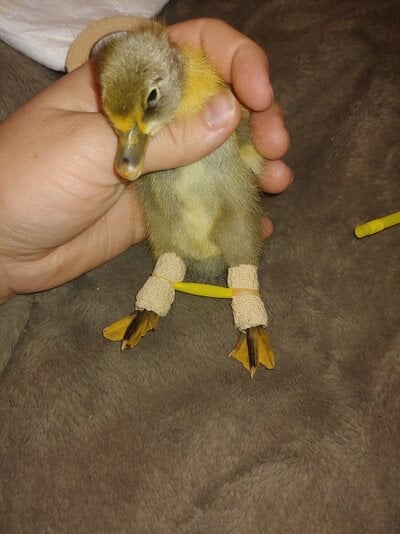EllieandOlive
Songster
Our mama duck hatched out a duck with severe spraddle leg. Thankfully I had a batch of chicks hatch the same day, so this ducky is in with the chicks in my garage where I can keep a close eye on it. I heavily researched spraddle leg, watched YouTube videos on how to help fix it, etc. I put a homemade leg brace on him and he is being supplemented with niacin and electrolyte water, and regular water. Naturally he just flops around to get place to place. I had the braces on for 48 hours, took it off to check and saw no improvement. Left another 24 houra (till tonight) and took off permanently because I read they can't be in them indefinitely. Well his legs are even worse now. One is splayed to the front and side, the other to the back and side. Full splitz. What else can I do? He is 3 days old now. I have him back in the brooder for the night, no braces.






